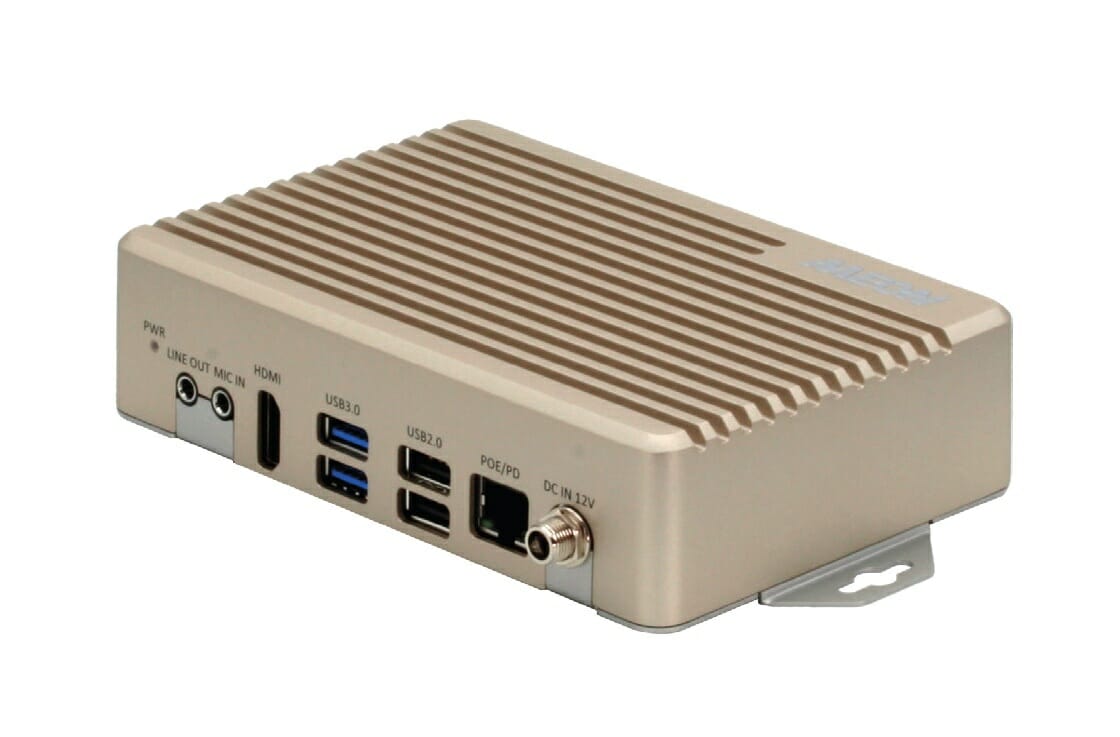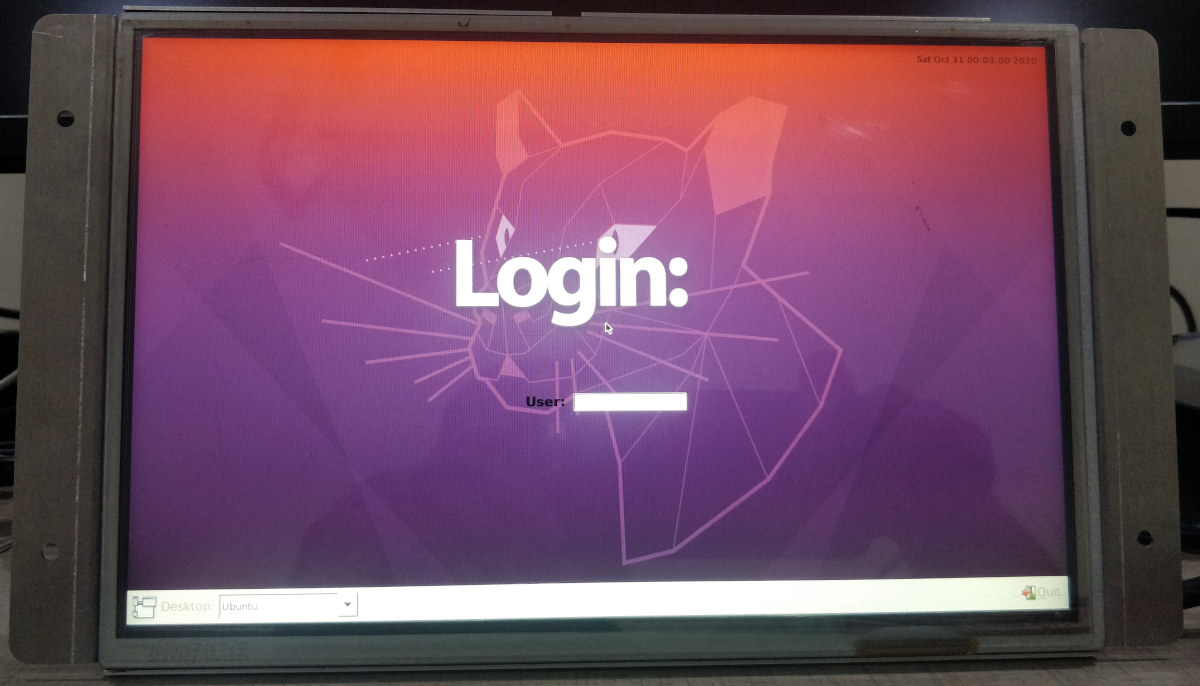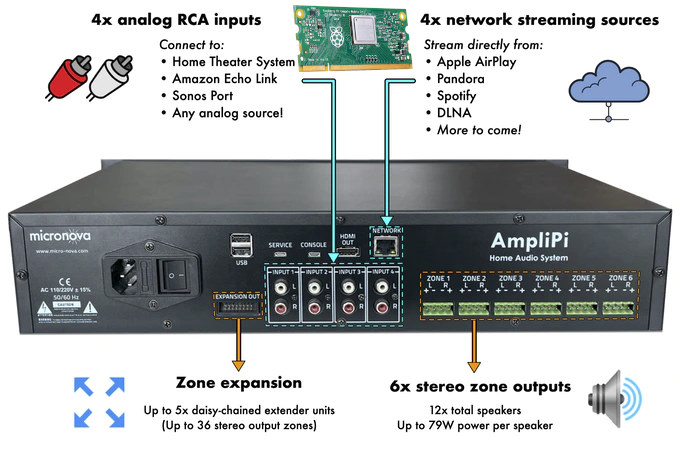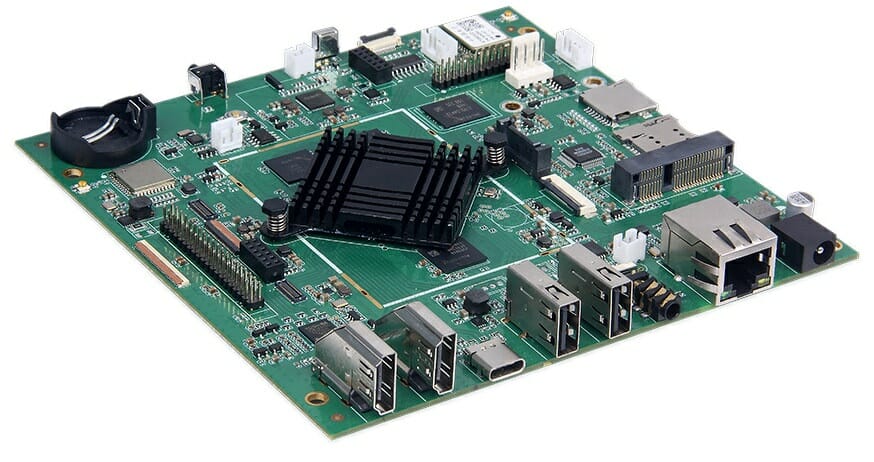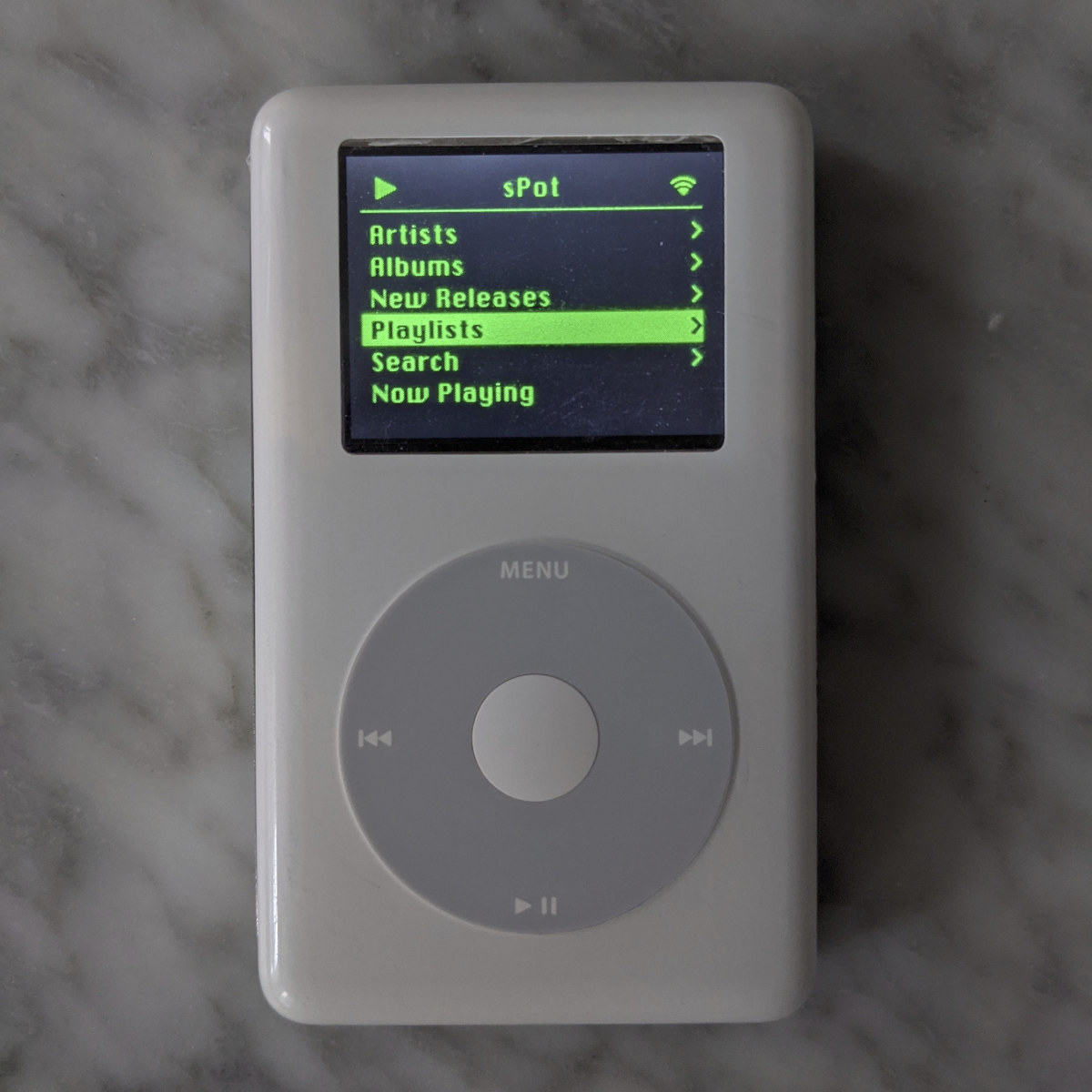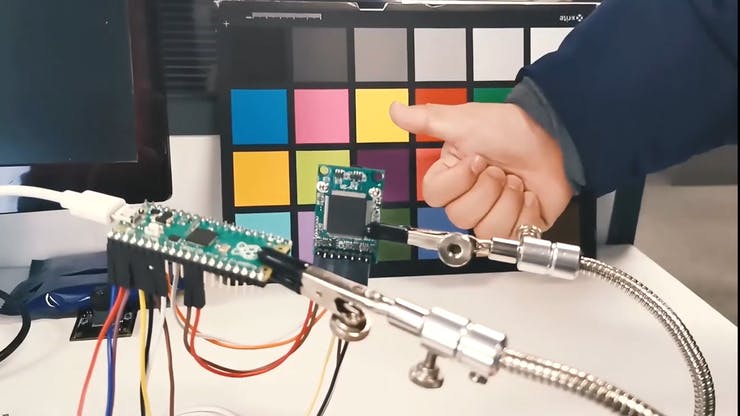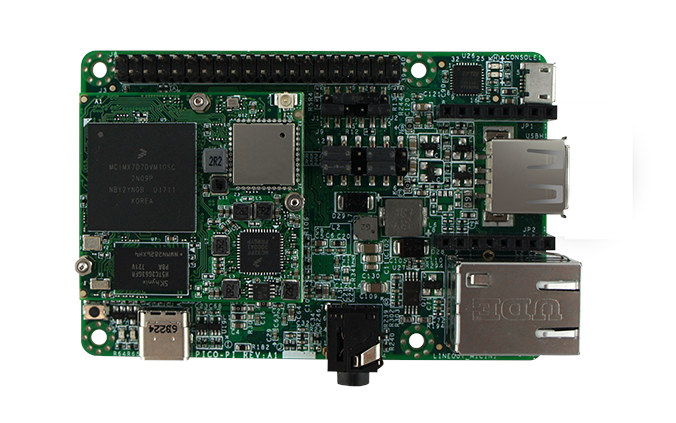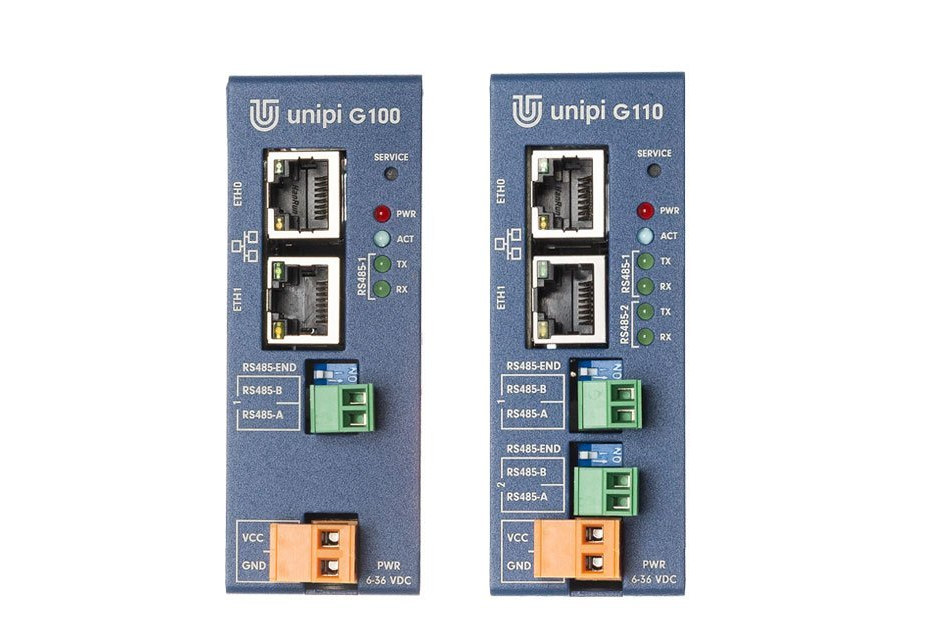AAEON has introduced several BOXER AI edge computers over the years either powered by an NVIDIA Jetson module, a HiSilicon HI3559A Arm SoC, or an Intel processor combined with Movidius Myriad AI accelerator. The latest model, BOXER-8521AI, combines an NXP i.MX 8M SoC with Google Edge TPU AI accelerator, and offers 1GB RAM, USB ports, a 40-pin external I/O connector, and 12V or PoE power inputs. AAEON BOXER-8521AI specifications: SoC – NXP i.MX 8M SoC quad-core Cortex-A53 processor with Cortex-M4F real-time core, 2D/3D GPUs AI Accelerator – Google Edge TPU ML accelerator coprocessor System Memory – 1GB LPDDR4x RAM Storage – 8GB eMMC flash, MicroSD card slot Video Output – 1x HDMI 2.0a port Audio – 1x Mic-in, 1x Line-out, optional 2x MEMS microphones Connectivity Gigabit Ethernet RJ45 port with PoE (802.3at) Optional? WiFi 2×2 MIMO (802.11b/g/n/ac 2.4/5GHz) & Bluetooth 4.1 plus two antennas USB – 2x USB3.2 Gen 1 […]
Engicam PX30.Core SoM & devkit run Ubuntu 20.04 with mainline Linux
Linux 5.11 was released a few days ago, and it’s always interesting to check out the changelog to find new hardware platforms that support mainline Linux. One of those is Engicam PX30.Core SoM based on Rockchip PX30 quad-core Arm Cortex-A35 processor. Engicam also worked with Amarula Solutions to develop an Ubuntu 20.04 image with mainline Linux compatible with EDIMM 2.2 and CTouch 2.0 carrier boards for PX30.Core CPU module. Engicam PX30.Core SoM Specifications: SoC – RockChip PX30 quad-core Arm Cortex-A35 @ 1.2GHz with Mali-G31 MP2 GPU with support for OpenGL ES 1.1, 2.0, and 3.2, OpenCL 2.0, Vulkan VX 1.0, 1080p60 video encoding/decoding System Memory – Up to 2 GB DDR4 Storage – 4GB eMMC flash (other capacities on request) Audio – Audio codec on module SO-DIMM edge connector Display Interfaces – 24-bit Parallel RGB, 18/24-bit LVDS Camera interface – 4-lane MIPI-CSI for up to 8MP camera Audio – I2S […]
AmpliPi – A Raspberry Pi-based whole house audio amplifier (Crowdfunding)
Micro Nova has put together an open-source, whole-house audio amplifier called AmpliPi based on Raspberry Pi Compute Module 3+. It is capable of streaming four independent sources to 6 stereo output zones, expandable to up to 36 stereo output zones through daisy-chained extender units. AmpliPi specifically supports inputs from four networking streaming sources including AirPlay, Pandora, Spotify, and DLNA, as well as four analog RCA inputs for your media appliances. AmpliPi key components and features: Controller Board Carrier board fitted with Raspberry Pi Compute Module 3+ and PCM5102A & CM6206 audio DACs. It also communicates over I2C with the STM32 MCU on the Preamp board (see below) to control the muxing and amplification systems. Interfaces 10/100M Ethernet port HDMI 1.4 output 2x USB 2.0 ports, plus one internal USB port Service and console ports for maintenance and/or debugging. Preamp Board Board equipped with a 6×4 audio matrix switching system and […]
Geniatech RK3568 Development Board to support Android 11 and Linux
RK3566 and RK3568 are the latest AIoT processors from Rockchip equipped with four Arm Cortex-A55 cores, a Mali-G52 GPU, and an impressive range of peripherals that make them suitable for all sorts of applications including AI edge computing and network video recorder (NVR). We already know Pine64 is working on Quartz64 SBC based on Rockchip RK3566, but I’ve just noticed Geniatech’s “RK3568 development board” that should offer even more features since the processor comes with extra I/Os compared to its little brother. Let’s have a look. Geniatech RK3568 development board specifications: SoC – Rockchip RK3568 quad-core Cortex-A55 processor up to 2.0 GHz with Arm Mali-G52 GPU supporting OpenGL ES 1.1/2.0/3.2, OpenCL 2.0, Vulkan 1.1, 0.8 TOPS NPU for AI acceleration System Memory – Up to 4 GB LPDDR4 Storage – Up to 128 GB eMMC 5.1 flash, 1x SATA 3.0 port, MicroSD card slot, M.2 socket for NVMe SSD (See […]
iPod Classic given new life with Raspberry Pi Zero W & Spotify
Guy Dupont got a bunch of 2004, fourth-generation iPod Classic MP3 players from his mother-in-law, and instead of playing MP3 files on the media players, he decided to repurpose one with a Raspberry Pi Zero W to be able to stream music from Spotify over WiFi. The resulting project is called sPot (ess-pot), and looks just like an original iPod, but it’s a Linux device that can stream/search via Spotify with a UI written in Python and based on the original iPod experience. But apart from the enclosure, and the original “click wheel” there’s not much left from the original design. Besides the Raspberry Pi Zero W SBC and iPod enclosure, the sPod includesAdafruit Mini LiPoly/LiIon USB Charger and PowerBoost 1000 Basic boards for charging and power management, a 1,000mah,3.7V rechargeable li-ion battery, vibration motor discs For haptic feedback, a 2-inch Adafruit TFT display, and a few other components, wires, […]
Person Detection on Raspberry Pi Pico with ArduCAM and TensorFlow Lite
ArduCAM is popular for camera-based applications with various boards ranging from Arduino to Raspberry Pi. We also saw the company’s tiny coin-sized Raspberry Pi compatible module 5 years ago. Now, it also supports the newly launched Raspberry Pi Pico for real-time video applications. Raspberry Pi Pico is compatible with the ArduCAM Mini 2MP Plus camera featuring an OV2640 2MP CMOS image sensor that supports automatic image control functions including Automatic Exposure Control (AEC) and Automatic Gain Control(AGC). The camera also comes with an onboard JPEG encoder for image compression. The company has provided a Github repository with two demo applications: a video streaming application and an example for basic person detection with the probability percentage of detection. There is also an option of directly using the UF2 files for flashing with Raspberry Pi Pico, if you don’t want to build the demo from the source code yourself. The application runs […]
PICO-PI-IMX7 NXP i.MX7 SBC offered for under $20 (Promo)
TechNexion PICO-Pi-IMX7 single board computer was introduced a few years ago with an NXP i.MX 7Solo or 7Dual Cortex-A7 Intel Edison compatible CPU module, in a form factor similar to Raspberry Pi 3, and supported by Android Things that was still a thing at the time… It looks like Arrow Electronics is trying to get rid of some stock, as the company is selling the Amazon version of the PICO-PI-IMX7 board for $19.58 including free shipping for ArrowPerks members, instead of the usual $120+ price tag. We had written about the PICO-iMX6 module and PICO-PI-iMX8 SBC previously, but never about the i.MX7 version, nor the PICO-PI-IMX7 board, so let’s have a closer look at what the board has to offer. PICO-Pi-IMX7 specifications: PICO-iMX7 system-on-module SoC – NXP i.MX 7Dual dual-core Cortex-A7 processor @ 1 GHz with Cortex-M4 real-time core System Memory – 512MB DDR3L Storage – 4GB eMMC flash Connectivity […]
UniPi Gate RS485 Linux IoT Gateway features 600 MHz Rockchip RK3328 SoC
Based in the Czech Republic, UniPi Technology design and manufacture programmable logic controllers, gateways, sensors and systems for smart homes, building management systems, industry and automation projects. Their latest product is UniPi Gate G100/G110 Linux IoT gateway with Ethernet and RS485 interfaces. When the company contacted CNX Software about the gateway, they told us the system was based on a quad-core Cortex-A53 processor clocked at 600 MHz. Since we are not aware of such SoC, we asked, and UniPi told us it was Rockchip RK3328. That processor is normally clocked at 1.5 GHz, and it turns out the company purposely underclocked the processor to 600 MHz to extend the temperature range and reduce the heat emitted by the CPU. UniPi Gate G100 & G110 specifications: SoC – Rockchip RK3328 quad-core Cortex-A53 processor @ 600 MHz System Memory – 512MB RAM Storage – 16GB eMMC flash, MicroSD card slot Networking – […]


